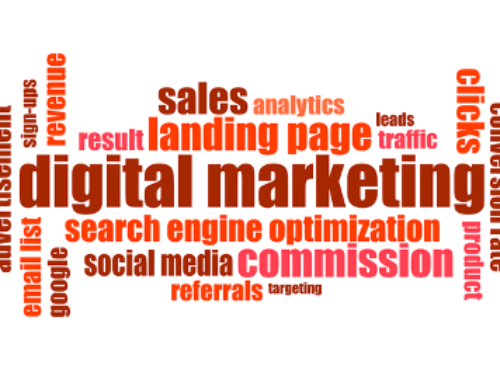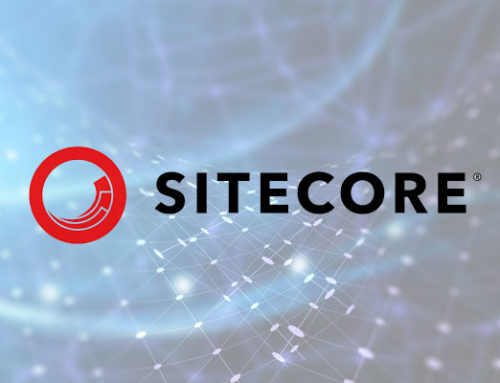The Ultimate Guide to Digital Marketing and Advertising
Digital marketing refers to the utilization of platforms to promote products and services to potential customers. It encompasses a variety of marketing strategies, including search engine optimization (SEO) social media marketing, email marketing, content marketing and more. The goal of marketing is to leverage the power of the internet in order to connect businesses with their target audience boost brand visibility and drive conversions.
In essence digital marketing operates on the fundamental principles as traditional offline marketing but takes place in a digital realm. It relies on consumer data to identify the target audience and deliver relevant messages. Whether you are a business to business (B2B) or business to consumer (B2C) company embracing marketing offers ample opportunities to streamline your marketing efforts and achieve tangible results.
The advantages of incorporating marketing into your overall strategy are plentiful irrespective of your businesss size or industry. Here are some key benefits;
1. Reaching a Broad Audience;
Digital marketing allows businesses to effortlessly reach a demographic of potential customers without being bound by geographical limitations typically associated with traditional channels, like TV or print media.
Digital marketing offers the advantage of connecting with people from time zones and regions expanding your market reach and creating new opportunities for growth.
b. Cost effectiveness
Compared to marketing methods digital marketing channels are more affordable. Creating and sharing content on social media platforms, blogs and websites typically requires investment beyond the time and effort put into content creation. Furthermore digital channels provide long term exposure as your content remains accessible online indefinitely unlike TV or newspaper ads.
c. Measurable outcomes
One of the benefits of digital marketing is the ability to accurately measure and track campaign performance. Unlike marketing where measuring results can be challenging digital marketing offers comprehensive analytics tools. These tools allow you to monitor metrics such as website traffic, conversions, social media engagement among others. With this data at hand you can gain insights into your marketing efforts and make data driven decisions to optimize your campaigns.
d. Personalization, for customers
Digital marketing harnesses customer data to provide experiences. By analyzing consumer behavior and preferences businesses can segment their audience. Deliver tailored messaging that addresses individual pain points and interests. Personalization enhances customer engagement while fostering relationships that lead to increased customer loyalty and higher conversion rates.
e. Engagement across Multiple Channels
In the realm of marketing businesses have the opportunity to connect with customers at every stage of their purchasing journey. Through digital channels, such as social media and email continuous communication and interaction can take place. This multi channel engagement not fosters brand loyalty but also creates chances for upselling, cross selling and customer retention.
3. Different Types of Digital Marketing
Digital marketing encompasses an array of strategies and tactics. Below are some categories that businesses can utilize to achieve their marketing objectives;
a. Search Engine Optimization (SEO) {#search engine optimization seo}
Search Engine Optimization (SEO) involves enhancing a websites content, structure and technical components to enhance its visibility in search engine results. The goal is to drive traffic (non paid) by achieving higher rankings in search engine results pages (SERPs) for relevant keywords. Important SEO techniques include keyword research, on page optimization, off page optimization and technical improvements.
b. Search Engine Marketing (SEM) {#search engine marketing sem}
Search Engine Marketing (SEM) refers to paid advertising campaigns that appear within search engine results pages.
Search Engine Marketing (SEM) typically involves businesses participating in pay per click (PPC) advertising, where they bid on keywords to ensure their ads are prominently displayed. Known SEM platforms include Google Ads and Bing Ads. SEM works alongside Search Engine Optimization (SEO) efforts by driving traffic to a website while also increasing brand visibility.
On the hand Social Media Marketing focuses on promoting a businesss products or services through various social media platforms. This strategy includes creating and sharing engaging content running ads and actively engaging with followers to build brand awareness drive website traffic and generate leads. Popular social media platforms used for marketing purposes include Facebook, Instagram, Twitter, LinkedIn, YouTube and TikTok.
Furthermore Pay, per Click Advertising (PPC) is another form of advertising where businesses pay for each click their ad receives. PPC campaigns can be executed on search engines (SEM) social media platforms or other websites via display networks. This advertising method allows businesses to effectively target keywords, demographics or interests in order to reach their desired audience.
e. Content Marketing {#content marketing}
Content Marketing revolves around the creation and distribution of informative and engaging content with the aim of attracting and retaining customers. It encompasses forms of content like blog posts, articles, videos, infographics, eBooks and podcasts to establish expertise in a particular field educate the audience and build brand credibility. The ultimate goal of content marketing is to provide value to the target audience while fostering relationships that lead to conversions and customer loyalty.
f. Email Marketing {#email marketing}
Email Marketing is a marketing strategy that involves sending personalized emails to a specific group of subscribers. Businesses utilize email marketing for delivering tailored content promoting products or services nurturing leads and cultivating customer relationships. Successful email marketing campaigns incorporate designed templates, compelling writing, clear calls to action (CTAs) and segmentation based on subscriber preferences and behavior patterns.
g. Mobile Marketing {#mobile marketing}
Mobile Marketing concentrates on reaching out to users through devices such as smartphones and tablets. This form of marketing includes tactics like SMS marketing (text message based promotions) advertising within applications (apps) as well as designing websites that are user friendly, across different mobile devices.
With the rise in mobile device usage businesses are now able to connect with customers when they’re on the move delivering personalized and timely messages.
h. Video Marketing {#video marketing}
Video Marketing involves utilizing video content to promote products, services or brand messages. These videos can be shared across platforms such as social media, websites and video sharing platforms like YouTube. The power of video marketing lies in its ability to visually engage audiences tell stories and effectively showcase products or services. It has gained popularity due to its high engagement potential and the increasing prominence of video sharing platforms.
i. Influencer Marketing {#influencer marketing}
Influencer Marketing capitalizes on the influence and reach of social media influencers to endorse products or services. Businesses collaborate with influencers who have a following and established credibility within specific niches. These influencers create content that features the brand and share it with their followers thereby increasing brand awareness and potentially influencing purchasing decisions. Influencer marketing is particularly effective, in reaching niche audiences while fostering trust among consumers.
4. Implementing a Digital Marketing Strategy
To successfully implement a digital marketing strategy businesses should adopt a systematic approach. Here are the key steps to consider;
Start by defining your objectives and goals for your digital marketing endeavors. Whether you aim to increase brand awareness drive website traffic generate leads or boost sales it is crucial to establish measurable, achievable, relevant and time bound (SMART) goals. These goals will provide a direction for your overall strategy.
Next take the time to identify and understand your target audience so that you can effectively tailor your marketing efforts. Conduct market research analyze consumer behavior patterns and create buyer personas to gain valuable insights into the needs, preferences and pain points of your audience. Armed with this knowledge you can create relevant content while delivering targeted messages through appropriate channels.
When it comes to choosing the digital marketing channels for your business consider factors such, as the nature of your business itself and the demographics of your target audience. Determine where they are most likely to engage with content. This might involve a combination of search engine optimization (SEO) search engine marketing (SEM) social media marketing (SMM) content marketing strategies and other suitable channels. Each channel has its advantages and requires a specific approach based on available resources and desired outcomes.
Lastly importantly; focus on developing captivating content that genuinely resonates with your target audience. It should be of quality while effectively addressing their needs and interests.
Create informative blog posts, articles, videos, infographics and other content formats that address the challenges your audience faces and provide practical solutions. Focus on developing content that not educates but also entertains the reader while adding value to their overall experience. Consistency is crucial in this process so establish a content calendar. Adhere to a regular publishing schedule.
Next optimize your website for visibility in search engine results by implementing effective SEO strategies. Conduct keyword research to identify relevant keywords and phrases that your target audience is likely to use when searching. Align your websites content, meta tags, headings and URL structure with these keywords, for optimization. Additionally focus on building high quality backlinks from websites to enhance your search engine rankings and boost organic traffic.
Leverage the power of social media platforms to engage with your audience while building brand awareness and driving traffic to your website. Develop a thought out social media strategy based on the preferences and demographics of your target audience. Create content that resonates with them actively interact with your followers and encourage social sharing to expand your reach and visibility. Continually monitor social media analytics to evaluate performance metrics and refine your strategy as needed.
Lastly consider incorporating paid advertising into your marketing strategy as an additional approach. Paid advertisements, such as pay per click (PPC) campaigns on search engines or social media platforms can offer visibility and attract targeted visitors to your website. Begin by setting a budget identifying your target audience and crafting ad copy and visuals to enhance the effectiveness of your paid advertising endeavors.
Next it’s important to monitor and analyze the performance of your digital marketing campaigns. Utilize analytics tools to track website traffic, engagement metrics, conversions and other relevant key performance indicators (KPIs). This will allow you to discern what is working well and what needs improvement. Make data driven adjustments to optimize your campaigns and continuously experiment with strategies messaging techniques and targeting methods in order to enhance results over time.
Additionally it is vital to stay up to date with the evolving landscape of digital marketing. Stay informed about industry news actively engage in communities or forums and consider attending conferences or webinars that cover the latest trends and technologies. Remain open minded towards experimenting with strategies and adapting your approach as needed in order to maximize the effectiveness of your digital marketing efforts while achieving your goals.
In conclusion digital marketing alongside advertising are elements, within modern business strategies. By leveraging the power of channels effectively businesses can reach a broad audience base while driving engagement and achieving measurable outcomes.
By incorporating a devised digital marketing plan that encompasses various strategies like search engine optimization (SEO) search engine marketing (SEM) social media marketing, content marketing and more businesses can effectively engage with their desired audience establish brand recognition and drive conversions. It is important to analyze and optimize your campaigns to ensure sustained success, in the ever evolving realm of digital marketing and advertising.
Achieving a digital marketing strategy necessitates a blend of imaginative thinking, data analysis and strategic planning. By adhering to the steps outlined in this guidebook businesses can confidently navigate the landscape and accomplish their marketing goals. Embrace the potential of marketing and advertising to propel your business forward in this era of digitization.






